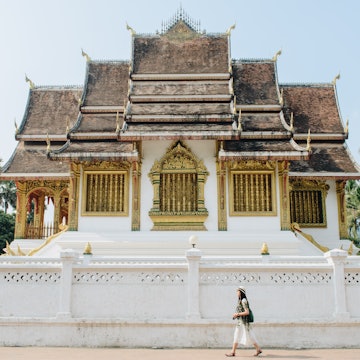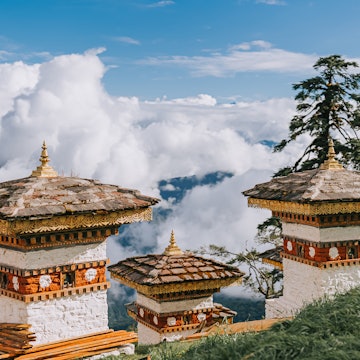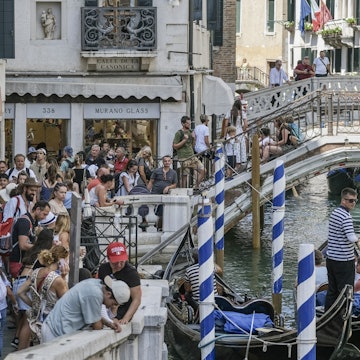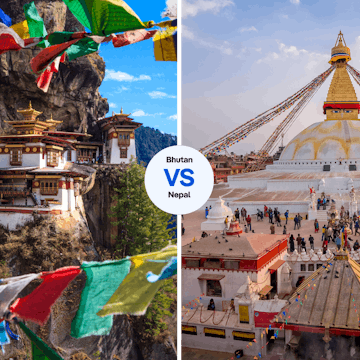

Learn everything you need to know about the tourist tax, costs and visas for Bhutan. Andrew Stranovsky/Getty Images
Bhutan is one of the most fascinating and remote travel destinations in the world. And its tourism model and visa system are famously unlike any other in the world.
The country is committed to “high value, low impact” tourism – in other words, maximizing the financial benefits visitors bring while minimizing their environmental and cultural impact. In Bhutan's case, “high value” means that visitors have to pay a fixed daily fee (sometimes called a tourism tax) in order to secure a visa. This makes the Himalayan kingdom one of the most expensive countries on earth to visit. And also one of the most sustainable.
With the exception of Indian nationals, every traveler needs a visa for their visit to Bhutan. But that’s the last of many steps you need to take before your once-in-a-lifetime trip here. If you’re tempted to take the plunge (and who wouldn’t be?), we’ve got everything you need to know about arranging a visit to this utterly unique and magical place.
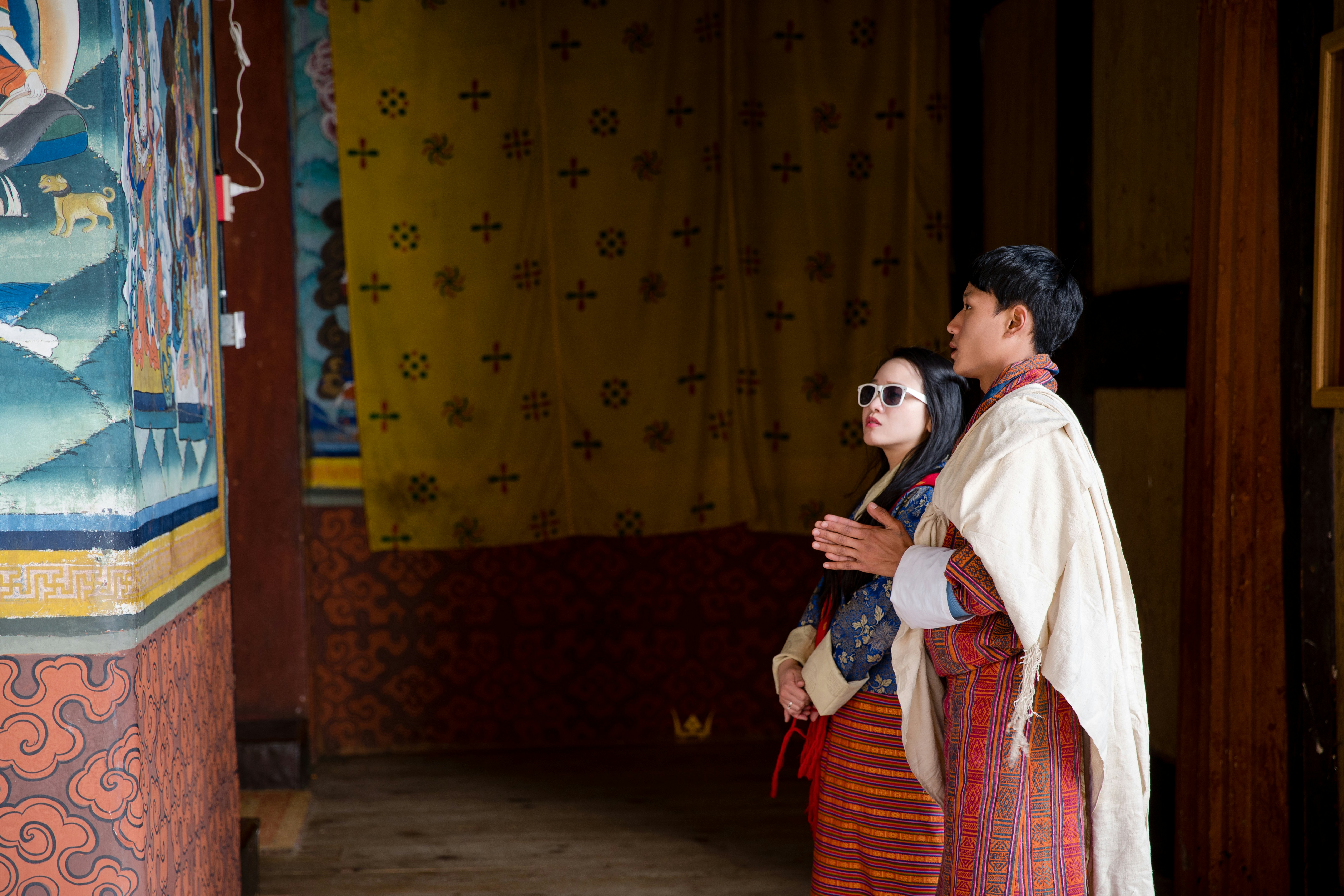
Bhutan’s unique tourism model
Bhutan’s system of tourism reflects the country’s prioritizing of “Gross National Happiness” over mere gross national product. Environmental stewardship and the preservation of traditional lifestyles have long guided tourism regulations. As the country adapted to post-pandemic travel trends, it made changes to its system.
Until 2020, almost all foreign tourists were charged a flat minimum fee of US$250 per person, per day for a fully organized tour. Of this, US$65 went to the government to help fund free education and healthcare for Bhutan’s citizens; the rest went towards tour costs.
But in 2022, the Bhutanese government announced a new system, whereby the daily government charge, now branded the “Sustainable Development Fee (SDF),” was increased from US$65 to US$200 per person, per day – with this now being in addition to your actual travel costs. This change meant that tour prices were no longer fixed, leaving companies free to levy their own charges based on customer demand and preference.
Coming just after the pandemic, the big jump in fees hit Bhutan’s tourism industry hard – after pushback from local businesses, the government announced in 2023 that the SDF would be halved to US$100 per person, per day until 2027. Which means that if you’ve always dreamed of visiting Bhutan, you might want to start planning now, before prices rise again in 2027.
Where exactly does this daily fee go? On top of helping pay for free healthcare and education, the SDF funds everything from conservation and sustainable tourism practices to carbon offsets and organic farming. Bhutan’s singular system has also contributed to Bhutan becoming the first carbon-negative country on earth – actually absorbing more carbon dioxide than it produces.
So while it might feel painful to fork over the cash, you can at least sleep well at night knowing that your funds are helping make the world a bit greener and fairer.

So how much does a trip to Bhutan actually cost?
On top of the fixed SDF of US$100 per person, per day, you will also have to factor in the obligatory cost of hiring a guide for your time in Bhutan, as well as a driver and transport for getting around the country. All hotel accommodations and food should be part of your budget, too. Entry fees to major destinations will add US$100-200 per person to most tours.
Under the new rules, you are free to choose any hotel or homestay that is allowed to accept foreigners. These start at US$50 per night, though most four-star tourist hotels charge around US$150 for a double room.
All told, an itinerary booked directly through a Bhutanese tour agency will likely cost around US$250 to US$350 per day per person, depending on the itinerary and group size. Visiting as a solo traveler will be costlier, since you won’t be able to pool the costs of your guide, transportation or accommodation.
Families get a bit of a break, with children ages six to 12 paying only half the SDF (US$50 per day); children under five are exempt from the fee.
Through April 13, 2025, the Bhutanese government is waiving one day of SDF for any tourist who visits the border communities of Samtse, Phuentsholing, Gelephu and Samdrup Jongkhar.
What about tourists from India and elsewhere in South Asia?
The main exception to the new fee rule is Indian tourists, who make up over 70 percent of annual visitors to Bhutan. Indian nationals pay a much smaller SDF of just Nu 1200 (US$15) per person per day though Indian visitors must pre-arrange a guide and hotel accommodation, plus permits for travel east of Thimphu. After confirming and prepaying these arrangements, Indian nationals do not need a visa to enter Bhutan. They do, however, need to apply for a permit to enter the country, either online or upon arrival.
Many Bhutanese travel agents point out that with Indian tourists arriving in their own vehicles on budget trips, it’s hard to see how Bhutan can justify its fee system for non-South Asian tourists and promote sustainable tourism in the long term.

Planning your trip to Bhutan
Since 2022, tourists have been able to book trips directly with hotels. So if you are just planning a visit to Thimphu and Paro, you can theoretically just book a stay, a guide and a couple of airport transfers directly through your accommodation.
For an itinerary involving multiple overnight stops, cultural programs, day hikes, trekking and other activities (which means most trips), you are better off booking with an experienced local tour agency, of which there are many.
It’s important to start planning your trip to Bhutan early. You will need at least a month to pin down your itinerary, pay the tour operator and get your visa approved. If you are visiting in the high season months of October, November, March and April, you should book your international flights to Bhutan far in advance, as the few flights available do fill up.
Once you’ve agreed on your itinerary and tour price, the next step is to pay your agency, most likely via a bank transfer to the agency’s account at the Bhutan National Bank.
Most visitors pay the daily SDF directly to their travel agent (who remits it to the government).
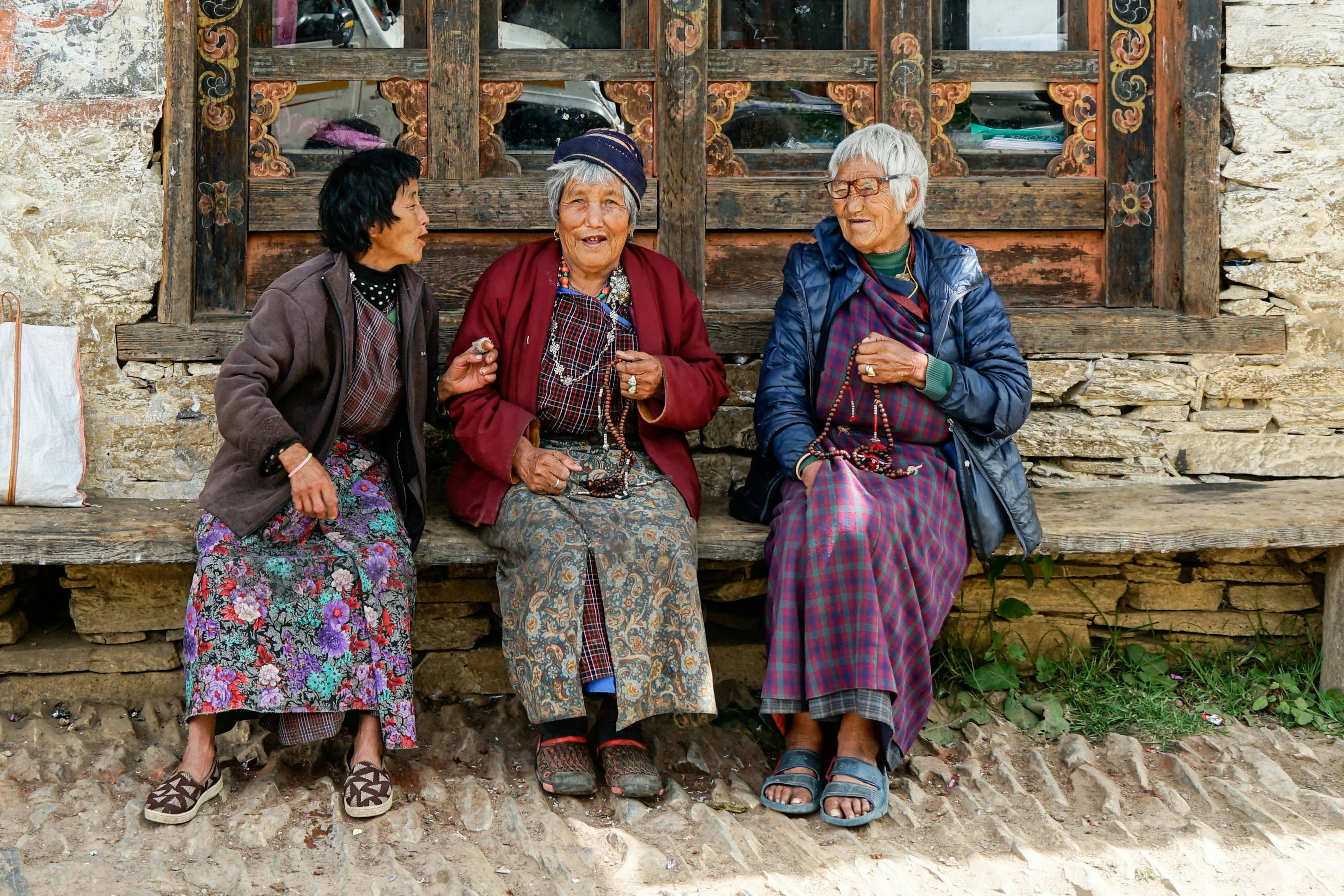
How to apply for a visa to Bhutan
After you’ve arranged your trip and paid the SDF, the actual processing of a Bhutanese visa is little more than a formality. After you’ve filled out a visa form and sent your agency a digital photograph and a scan of your passport photo page, the agency will email you a copy of your visa authorization after a few days. The mandatory requirement for travel insurance was lifted in 2024 but it's still highly recommended that you purchase it before you go. The visa itself costs US$40 and will likely be bundled with the overall tour price.
Visas are not issued by embassies overseas, but rather stamped into your passport upon arrival at Paro airport after you present your visa-authorization letter. At land borders, you will meet your guide at the crossing; they will process the visa for you as you wait.
After the work and cost of making all the other arrangements, the process of obtaining a visa for Bhutan is quite stress-free.








